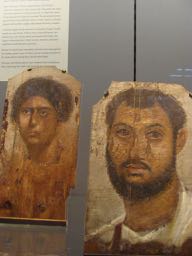It is our last morning at Ely Cathedral, and we will miss it terribly. The Dean, The Very Rev. Mark Bonney, and the Cathedral staff have been so hospitable to the choir and to me as well. We loved working with them, and they made so many possibilities available to us. At the 10:30 Mass, the Dean was the preacher, and chose an excellent segment of the Gospel for the day to riff on. It is Jesus' question to the disciples after a series of parables (The mustard seed, yeast, the hidden treasure, and the fine pearl.) Jesus asks them: "Have you understood all this?" The Dean then gently took us through a number of the Christian mysteries, and wondered if we had understood this.
It was a good question and he treated it well. I had come into the cathedral earlier, partially to listen to the choir in rehearsal, but also to make one last pilgrimage amongst the cathedral's pillars and chapels. Some of my thought were guided by another quotation from that same Gospel,
"Therefore every scribe who has been trained for the kingdom of heaven is like the master of a household who brings out of his treasure what is new and what is old."
George Emblom and I experienced treasure as we stood with Canon Victoria Johnson at the high altar following Evensong. There in the cross were multiple treasures. From what looks like a variegated golden object, up close reveals details of angels with thuribles, stones, and images. Like faith, closer inspection might beget wonder as we look at the details that had escaped our initial engagement with them. So like the scribe, we were bringing out the treasures, old and new, to help us think and believe. Those thoughts lead to understanding and further discovery.
The choir enabled that inventory as it sang both old and new - a piece inspired by a starry sky, Anglican chant, songs of our Lady in multiple versions, and Simeon rejoicing in the fulfillment of what he had been seeking.
Over the last couple of Sundays we explored Jesus' parables on seed and weed, sower and soil. But now we are clearly in the harvest - a harvest of treasures, both old and new - a harvest of understanding, if you will. As I walked the cathedral I saw many things, both old and new, that challenged me to think through my faith. The chantry with its complex ceiling that bid me to sit and meditate:
Places in the cathedral where one might see the intersection of the really old with the relative new:
A window depicting the Jesse Tree that made me realize that it's really all about time and process - and change too, I think.
Such a place aids us in our attempts to understand and integrate the Gospel into our lives. So thank you George Emblom for bringing that capacity to us, and to the choir for making it all glorious. Thank you for your many voices, young, old, those who augmented, and those who have sung faithfully for many years. You all bring out treasures, both old and new, and enable our efforts to understand and to believe.
And finally thank you to the Dean, The Canon Precentor, James Garrard, Canons Jessica Martin, and Victoria Johnson, and to all the vergers, sacrists, ushers, and others who helped us unload the treasures.



















































